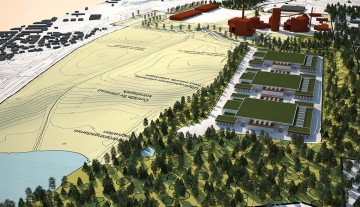Friday, 26/12/2025 | 08:45 GMT+7
The reliance on information and communications technology in the modern world lends itself to some staggering numbers in relation to energy consumption. The now ubiquitous smart phone can consume more energy than an average sized refrigerator when numbers concerning data usage, regular re-charging and numerous wireless connections are totalled. The seemingly endless increase in communications and information device usage has caused a related growth in the data centers needed to host, store and power the networks required, its digital infrastructure. Forecasts and reports are indicating that the combined carbon dioxide emissions from worldwide data centers, over 3 million of them, are on course to exceed those of the entire airline industry in only 5 years time.
Given the scale of these buildings, in physical size and energy consumption, their efficiency is of concern to many, including Borge Granli, one of the founders of EcoDC AB. Alongside Falu Energi & Vatten, EcoDC AB have pioneered a new ‘green’ data center in Falum, Sweden. Falun also has a cogeneration plant contributing to energy provision. The local energy system was praised as one of the world’s best in 2013 by Global District Energy Climate Award in New York.

The ‘EcoDataCenter’, is on course to be the world’s first ‘climate-positive’ data center. The energy required to run the center will be drawn from the highly efficient local energy grid which is powered by renewable sources such as wind, solar and hydro power. Through a combination of various energy saving techniques, excess energy produced by the facility will serve to heat buildings in the district.
During the summer months, when the cogeneration plant produces excess steam, it will be used to run the data center’s cooling systems and keeps it running at its optimum temperature. To aid in cooling during the summer, flowering plants will act to dissipate heat from the roof of the facility. In turn, when excess heat from the data center is produced it will be fed into the municipal heating system for the district. The climactic conditions in Sweden are extremely suitable to large scale data centers as the cooling of equipment is ‘free’ in the months of October to April.
The designers of the EcoDataCenter have collaborated with Schneider Electric to also develop energy efficient security solutions whilst still retaining its ranking as a Tier IV secure building, one of only 13 in the world.
Our increasing energy demands need not increase our climatic and environmental impact and innovative solutions, such as that of the EcoDataCenter in Falun, show that this balance is one which can be attained. Recent pans by Apple for data centers in Ireland and Denmark employ similar energy sharing solutions in a bid to offset their emissions.








 Webinar 2: “Financial Support for Energy Efficiency Enterprises – Opportunities and Challenges”
Webinar 2: “Financial Support for Energy Efficiency Enterprises – Opportunities and Challenges”
 Vietnamese enterprises achieve green growth and cut costs through energy efficiency
Vietnamese enterprises achieve green growth and cut costs through energy efficiency
 Capacity Building for Program Implementing Entity
Capacity Building for Program Implementing Entity
 Enhance Energy Efficiency Knowledge for Managers of Cement Industrial Enterprises
Enhance Energy Efficiency Knowledge for Managers of Cement Industrial Enterprises
 Capacity building for participating financial institutions of the VSUEE Project
Capacity building for participating financial institutions of the VSUEE Project
 Capacity building for participating financial institutions in Ho Chi Minh City
Capacity building for participating financial institutions in Ho Chi Minh City
 Strengthening capacity for energy management officers of local government agencies
Strengthening capacity for energy management officers of local government agencies